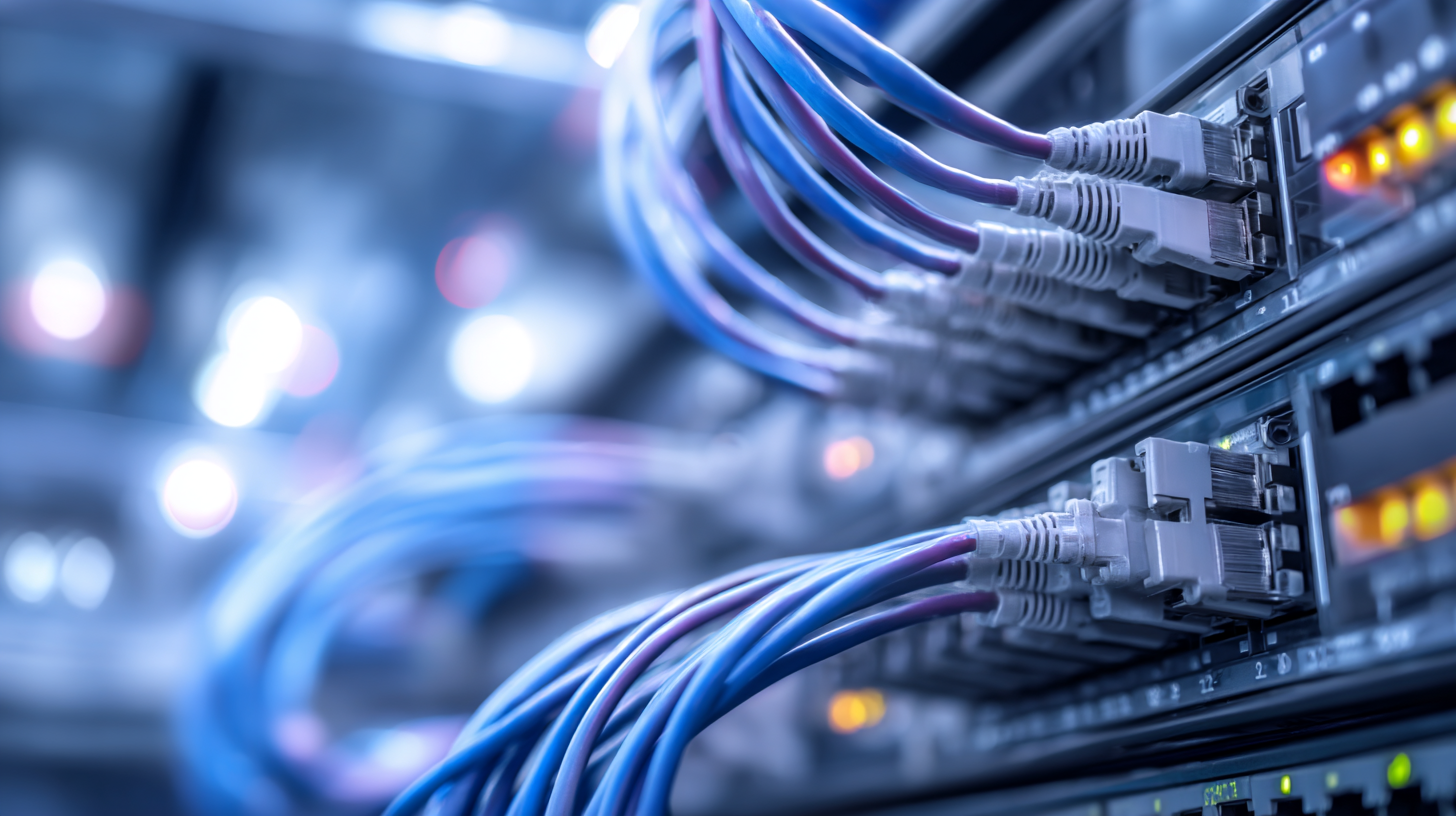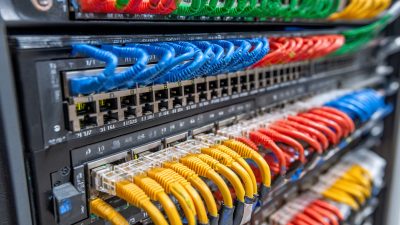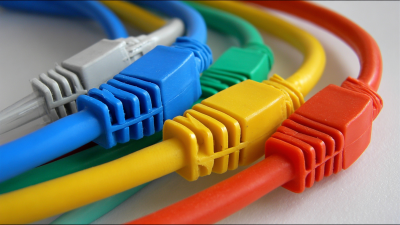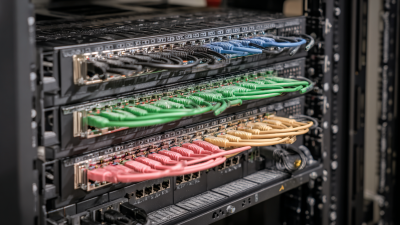What is Networking Infrastructure and Why it Matters for Your Business
In today's rapidly evolving digital landscape, the importance of a robust networking infrastructure cannot be overstated. It serves as the backbone of any modern business, enabling seamless communication, data sharing, and collaboration among employees, clients, and stakeholders. A well-designed networking infrastructure not only enhances operational efficiency but also supports business growth by providing the necessary tools to adapt to emerging technologies and market demands.

Understanding the nuances of networking infrastructure is crucial for any organization aiming to leverage technology for competitive advantage. This guide will delve into the core components of networking infrastructure, offering insights into how to evaluate your current setup and make informed improvements. Whether you are a small startup or an established enterprise, having a solid networking infrastructure in place is essential for ensuring connectivity, reliability, and scalability in your business operations. By mastering the fundamentals, businesses can position themselves for success in an increasingly interconnected world.
Understanding Networking Infrastructure: Components and Structure Explained
Networking infrastructure comprises various essential components that form the backbone of communication systems for businesses. Understanding its structure is crucial, as it encompasses everything from physical hardware like routers and switches to virtual elements such as software-defined networking. Recent studies have highlighted the importance of security and resilience within this infrastructure. For instance, experts have proposed methodologies for evaluating flood damage to critical infrastructure components, emphasizing the need for robust flood management strategies in network planning.
To optimize networking infrastructure, businesses should consider several key tips. First, simplifying network architecture can lead to more efficient operations. Offloading workloads to cloud solutions not only enhances flexibility but also reduces the strain on local systems. Another important aspect is ensuring governance and compliance throughout your infrastructure; maintaining a clear oversight framework helps mitigate risks and improves overall performance. With the rise of advanced technologies, such as satellite networks and integrated verification systems, it’s vital for businesses to stay updated on innovations that can strengthen their networking capabilities.
What is Networking Infrastructure and Why it Matters for Your Business
| Component | Description | Importance | Examples |
|---|---|---|---|
| Routers | Devices that forward data packets between computer networks | Essential for managing traffic and ensuring data reaches its destination efficiently | Cisco Routers, Juniper Routers |
| Switches | Connect devices within a single network and manage data traffic | Facilitate communication between devices and improve network efficiency | Managed Switches, Unmanaged Switches |
| Firewalls | Security systems that monitor and control incoming and outgoing network traffic | Protect networks from unauthorized access and threats | Palo Alto Firewalls, Fortinet Firewalls |
| Access Points | Devices that allow wireless devices to connect to a wired network | Enable wireless connectivity and expand network reach | Ubiquiti Access Points, TP-Link Access Points |
| Cabling | Wires that connect network devices and transmit data | Critical for establishing physical network connections | Ethernet Cables, Fiber Optic Cables |
The Role of Network Performance in Business Efficiency and Productivity
Network performance is crucial for enhancing business efficiency and productivity in today's digital landscape. According to a report by Gartner, companies that prioritize network optimization can achieve up to a 30% increase in employee productivity. This improvement arises from faster access to resources, seamless collaboration tools, and reduced downtime, which collectively drive operational efficiency. In a world where remote work and cloud-based services are on the rise, a robust networking infrastructure ensures that employees can access essential applications swiftly, regardless of their location.
Moreover, the importance of network performance transcends mere speed; it also involves reliability and security. A study by the Ponemon Institute found that network outages cost businesses, on average, $5,600 per minute. Such downtimes not only disrupt workflows but can also erode customer trust and satisfaction. Efficient networking infrastructure with high-performance capabilities enables businesses to mitigate risks associated with network failures, ensuring that operational procedures run smoothly and customer service remains uninterrupted. By investing in superior network performance, organizations can unlock greater productivity and transform their overall business operations.
Impact of Reliable Networking on Revenue: Statistics from Industry Leaders
 Reliable networking infrastructure is critical for business success, as it directly impacts revenue generation. According to a report by Cisco, businesses that invest in robust networking solutions can achieve a 15% increase in annual revenue. Furthermore, research from Forrester indicates that companies with high-performance networking systems experience up to a 20% boost in productivity, which catalyzes growth and enhances competitiveness in the market.
Reliable networking infrastructure is critical for business success, as it directly impacts revenue generation. According to a report by Cisco, businesses that invest in robust networking solutions can achieve a 15% increase in annual revenue. Furthermore, research from Forrester indicates that companies with high-performance networking systems experience up to a 20% boost in productivity, which catalyzes growth and enhances competitiveness in the market.
When assessing the importance of networking infrastructure, consider these tips: first, ensure your network is scalable to accommodate future growth; second, regularly invest in upgrades and maintenance to prevent downtimes, which can cost businesses an average of $5,600 per minute, as reported by Gartner. Lastly, prioritize cybersecurity measures, as 43% of cyber attacks target small businesses, potentially leading to devastating financial losses.
Building a solid networking foundation is not just about keeping the lights on—it's about leveraging technology to enhance overall business performance. By prioritizing reliable networking, companies can unlock new revenue streams and navigate the complexities of the modern digital landscape with confidence.
Cybersecurity Risks: How Strong Networking Infrastructure Mitigates Threats
Strong networking infrastructure is crucial in mitigating cybersecurity risks that businesses face today. According to the Cybersecurity & Infrastructure Security Agency (CISA), 60% of small and medium-sized businesses experiencing a cybersecurity breach go out of business within six months. A well-designed network not only enhances communication but also embeds security features that protect sensitive data. Implementing firewalls, intrusion detection systems, and secure VPNs can create barriers against potential cyber threats, ensuring that business operations continue without significant disruption.

Tips for enhancing your networking infrastructure include regularly updating your software and hardware to patch vulnerabilities, as outdated systems are the most common entry point for cybercriminals. Furthermore, consider investing in employee training programs focused on cybersecurity awareness; a report by Symantec indicated that 95% of cybersecurity breaches are caused by human error. Lastly, employing a layered security approach that encompasses physical security, network security, and application security can significantly reduce the risk of cyber threats, as highlighted in the Verizon Data Breach Investigations Report, which found that 81% of hacking-related breaches exploited stolen or weak passwords.
Future Trends in Networking Infrastructure: 5G, IoT, and Beyond
The evolution of networking infrastructure is rapidly transforming the business landscape, especially with the advent of technologies like 5G and the Internet of Things (IoT). 5G networks promise to deliver unprecedented speeds and lower latency, significantly enhancing real-time data processing capabilities. This will not only enable better customer experiences but also drive innovation across various sectors, such as healthcare, transportation, and manufacturing. Businesses leveraging 5G will find themselves capable of deploying advanced applications, integrating AI and machine learning to optimize operations and improve decision-making.
On the horizon, the proliferation of IoT devices is reshaping how businesses connect, communicate, and collect data. With millions of devices networked globally, companies can gather valuable insights into consumer behavior and operational efficiency. This connectivity allows for smarter supply chains, predictive maintenance, and enhanced customer engagement, setting the stage for more agile and responsive business models. As these trends mature, investing in robust networking infrastructure will be essential for businesses looking to stay competitive and harness the full potential of these transformative technologies.
Future Trends in Networking Infrastructure
Related Posts
-

Transforming Networking Infrastructure Trends at the 2025 China Import and Export Fair for Enhanced Industry Growth
-

Maximize Your Network Efficiency: Understanding the Role of Cat 6 Patch Panels in Modern Data Centers
-

10 Reasons Why Cat 6 Bulk Cable is Essential for Your Network Installation
-

Ultimate Guide to Boost Your Internet Speed with Cat 6 Network Cable
-

What is the Importance of Network Fiber Optic Cable in Modern Communication
-

Unlocking High Performance Networking with Advanced Cat 6A Patch Panels for Future Proof Systems
